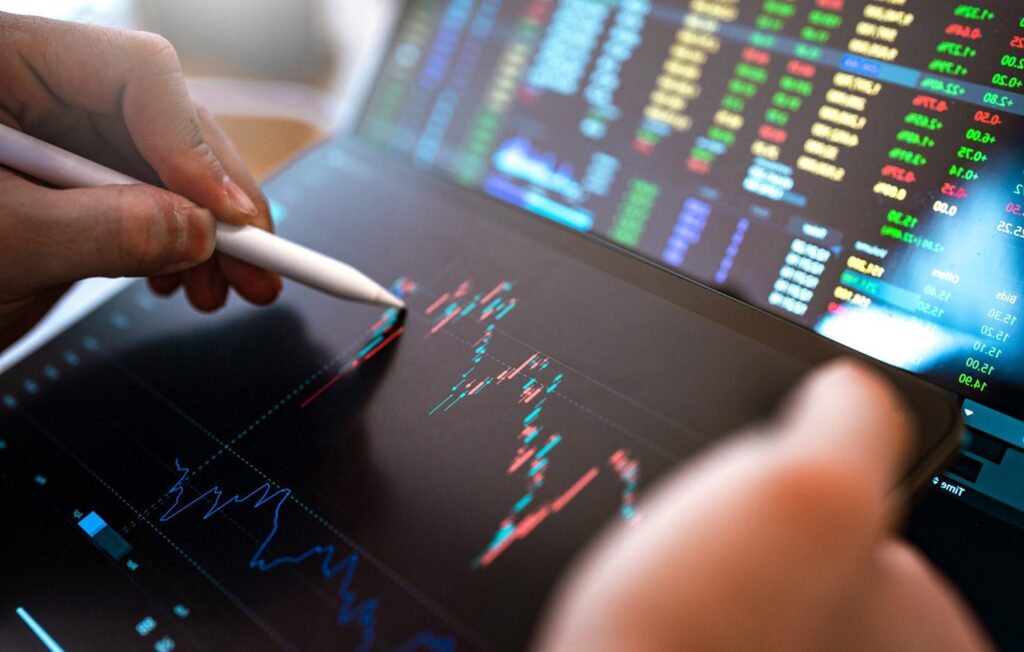In today’s fast-paced financial markets, algorithmic trading has become an indispensable tool for investors looking to gain a competitive edge. One particular subset of algorithmic trading that has garnered significant attention is high-frequency trading. With its lightning-fast execution speeds and ability to exploit tiny price discrepancies, high-frequency trading strategies have transformed the trading landscape.
What is algorithmic trading?
Algorithmic trading, also known as algo trading, is the use of computer algorithms to automate trading decisions. These algorithms analyze vast amounts of market data, identify patterns, and execute trades at lightning-fast speeds. By eliminating human emotion and making split-second decisions, algorithmic trading has the potential to increase trading efficiency, reduce costs, and minimize human error.
The evolution of algorithmic trading
Algorithmic trading has come a long way since its inception. It first gained prominence in the 1980s with the introduction of electronic trading platforms. These platforms allowed traders to execute trades electronically, replacing the traditional open outcry system. As technology advanced, so did algorithmic trading. Today, sophisticated algorithms powered by artificial intelligence and machine learning are capable of analyzing massive amounts of data in real-time, enabling traders to make informed decisions at lightning speeds.
Benefits of algorithmic trading
Algorithmic trading offers numerous benefits to traders. Firstly, it allows for the execution of large trades with minimal market impact. By breaking down large orders into smaller ones and executing them over time, algorithmic trading avoids sudden price movements that can occur when large orders are placed in the market. Additionally, algorithmic trading enables traders to take advantage of market inefficiencies and exploit price discrepancies that may exist for only a fraction of a second. This can result in increased profitability and improved risk management.
High-frequency trading strategies explained
High-frequency trading (HFT) is a subset of algorithmic trading that involves the rapid execution of trades in fractions of a second. HFT strategies rely on high-speed computers and advanced algorithms to identify and execute trades based on predefined criteria. These strategies often involve arbitrage, where traders exploit price differences between different markets or securities. HFT strategies can be categorized into market-making and statistical arbitrage strategies, each with its own unique approach to trading.
Common algorithms used in high-frequency trading
High-frequency trading strategies rely on a variety of algorithms to execute trades with lightning speed. One commonly used algorithm is the mean-reversion strategy, which takes advantage of short-term price deviations from their long-term averages. Another popular algorithm is the momentum strategy, which capitalizes on the continuation of price trends. Additionally, statistical arbitrage algorithms analyze historical price relationships between securities to identify trading opportunities. These are just a few examples of the algorithms used in high-frequency trading, highlighting the diverse range of strategies employed by traders.
Risks and challenges in high-frequency trading
While high-frequency trading offers significant advantages, it is not without its risks and challenges. One of the main risks is the potential for technological glitches or system failures. A single malfunction can lead to significant financial losses in a matter of seconds. Additionally, HFT strategies are highly dependent on low-latency connectivity and co-location services, making them vulnerable to disruptions in internet connectivity or power outages. Furthermore, there is ongoing debate surrounding the fairness and ethics of high-frequency trading, as some argue that it gives certain traders an unfair advantage over others.
Tools and technologies for algorithmic trading
To engage in algorithmic trading, traders require access to a variety of tools and technologies. These include robust trading platforms that offer low-latency connectivity, real-time market data feeds, and advanced order execution capabilities. Additionally, traders need access to historical and real-time market data, which can be obtained through data vendors or exchanges. Furthermore, algorithmic trading often requires sophisticated hardware infrastructure, such as high-performance servers and co-location services, to ensure lightning-fast execution speeds.
How to get started with algorithmic trading
Getting started with algorithmic trading can seem daunting, but with the right approach, it can be a rewarding endeavor. Firstly, it is essential to gain a solid understanding of financial markets, trading principles, and technical analysis. Additionally, learning programming languages such as Python or R can be beneficial, as it allows traders to develop their own algorithms. Furthermore, engaging in backtesting and paper trading can help traders refine their strategies before risking real capital. Finally, choosing a reliable algorithmic trading platform and broker is crucial for success in the world of algorithmic trading.
Algorithmic trading platforms and brokers
There are numerous algorithmic trading platforms and brokers available in the market, each offering unique features and capabilities. When selecting a platform, it is essential to consider factors such as latency, reliability, user interface, and available order types. Additionally, traders must ensure that the platform supports the programming languages and algorithms they intend to use. As for brokers, it is crucial to choose a reputable and regulated broker that offers competitive pricing, reliable execution, and a wide range of tradable instruments.
Conclusion
Algorithmic trading, particularly high-frequency trading, has revolutionized the financial markets. By leveraging advanced algorithms and lightning-fast execution speeds, high-frequency trading strategies have the potential to generate significant profits. However, it is important to recognize the risks and challenges associated with algorithmic trading and to approach it with caution. By understanding the mechanics behind algorithmic trading, employing robust strategies, and utilizing the right tools and technologies, traders can navigate the complexities of this dynamic trading technique and potentially achieve success in the fast-paced world of algorithmic trading.
So, fasten your seatbelts as we embark on a thrilling journey through the fascinating realm of algorithmic trading.


